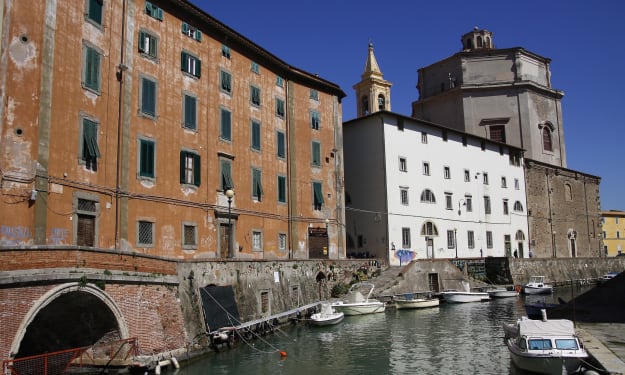Mary Shelley, "Frankenstein"
An unforgettable monster

There is a love story between a British poet and a writer: Percy Bysshe Shelley (1792–1822) and Mary Shelley (1797–1851)
Mary is the daughter of the feminist Mary Wollstonecraft, grown according to the libertarian principles of maternal ideology; Percy is married to Harriet, from whom he has children who will then be stolen from him. When they meet, Mary is seventeen, they fall in love, they elope and manage to get married only after his sudden widowhood. They bring many children into the world of which only a few survive their parents. They find refuge to their wanderings in Italy, where Percy tragically dies on a boat off Lerici. He is burnt on the beach of Viareggio, in pure romantic style, she returns home by swearing that she will take care of the editions of her husband’s works and will bear his name until the end of her days.
He is one of the leading exponents of the Lake Poets, along with Wordsworth, Keats, Coleridge. He writes “Ode to a Skylark” and the tragedy “the Cenci”, but the one that leaves a scratch, a paw, a footprint in the clay of the collective imagination and in the history of the fantastic is her, Mary.
Mary’s half-sister, Claire Clairmont, becomes the lover of Lord Byron, who begins to hang out at the Shelley house, Diodati villa on Lake Geneva, together with another friend, John Polidori. It’s raining, the evenings are tedious and cold, the company spends time reading German ghost stories. The idea of a competition is launched for those who write the most frightening and intriguing Gothic story. Thus were born Polidori’s “The Vampire”, inspired by the figure of Byron and the first example of a refined and melancholy blood sucker, and “Frankenstein” by Mary Shelley.
At the beginning she has no ideas, every morning she gets up and says that no subject has come to mind from which to draw an interesting plot, while everyone else is already writing. But she hears men discussing the principle of life, Darwinism, galvanism. Then, one night, she has a nightmare, she sees a terrifying being, assembled by a student who is kneeling beside him. She wakes up shocked, realizes that if she manages to put on paper the same fright she felt in the dream, she will create something powerful.
And so it is. At only nineteen years old, in 1817, Mary gives life to a creature that will remain in the collective myth: the nameless monster shaped by the scientist Victor Frankenstein. The novel comes out in epistolary and anonymous form and only later it will be discovered that the author is not Percy Bysshe Shelley but his young wife. It will be a success, like Bram Stoker’s later “Dracula” (1897).
Victor’s character is inspired by Percy Bysshe, he has, like him, love for science, passion and spiritual soul. Pride pushes him to act as a creator, to want to go beyond nature, giving rise to a stronger, healthier, more intelligent and long-lived being than normal. The opposite will happen: from the pieces of corpses sewn together and revived by electric current (which then had to appear as something sci-fi and magical together) comes a horrible creature, with a scary look and animalistic ways, unable to hold back the murderous impulses. Obsessed with the thirst for knowledge, Victor goes beyond the law and nature rebels, man cannot compete with God, he cannot break the laws of the universe, under penalty of death, destruction.
To unite once again Mary and her husband is the subtitle of the novel, “The Modern Prometheus”. In 1820 Percy wrote, in fact, “The Prometheus Unbound”. It is interesting to see how both spouses were inspired by the same figure but using different aspects of the myth. In Mary, Prometheus does not just steal the fire to give it to humanity but uses it to shape the clay and the man himself. In both cases Prometheus is a symbol of rebellion, of revolt against the divine will, with all the consequences that derive from it.
The atmosphere of the novel is influenced by the romanticism of Coleridge’s lines, in particular “The Ballad of the Ancient Mariner”. In the fantastic frame of the Gothic novel, metaphysical anxieties and dystopian scientific anticipations materialize, such as those later developed by Wells in his novels. (“The Time Machine” is from 1895).
Beyond the ethical implications, however, the text strikes us for the profound romanticism of the figure of the monster, which we all tend to call Frankenstein, mistaking it for its creator.
The monster has an evolution: he observes humans, learns to speak from them, reads Milton and Victor Frankenstein’s diary. He learns the language, the feelings, the aspirations of humans, he wants to be in conctact with them, get to know them, help them, be liked by them. But his appearance condemns him: everyone refuses him, everyone runs away terrified in front of him, his gentle gestures are mistaken for aggression.
Pain crushes him, detonates anger and he begins to kill again, he completely becomes what everyone believes him to be. Alone and damned he wanders the world, “Everywhere I see bliss, from which I alone am irrevocably excluded.”
The figure has a great romantic value, wrapped as it is in its immense solitude, it inspires horror and compassion together, because we understand that its wickedness derives from the pain and the waste suffered. In fact, the monster asks his creator to make him a bride, a female of his race. Victor Frankenstein gets to work, but then he thinks about it again, not wanting to produce a race of shadowy people. When the monster discovers it, sorrow overwhelms him and in revenge he kills Victor’s beloved wife Elisabeth.
Just by reading Dr. Frankenstein’s diary, the unhappy being discovers how disappointed his creator is with him, how much he despises him and wanted him different. Like a son not loved by his father, he feels hurt, lonely and desperate.
Then there will be the final confrontation, with the creature that kills the creator (as in the last scenes of “Excalibur”, the film by John Boorman, where King Arthur and his son Mordred — born from the incest with Morgana — kill each other. ) It is the eternal myth of the Doppelgänger, the obscure alter ego that embodies and unwraps all darkness and evil hidden in our soul, it is Mr Hyde for dr Jekyll, it is Gollum for Frodo, it is Voldemort for Harry Potter.
But how much pain, how much regret in the creature that destroys its creator. We are reminded of the first “Star Trek” (by Robert Wise, 1979) where the ancient Voyager 6 spacecraft, which left hundreds of years earlier from Earth, desperately tries to reunite with the humanity that built it.
The same desire for unity, for reconciliation with the father/creator, and, at the same time, for cupio dissolvi, occurs in Shelley’s novel.
“He is dead who called me into being; and when I shall be no more, the very remembrance of us both will speedily vanish. I shall no longer see the sun or stars, or feel the winds play on my cheecks. Light, feeling, and sense will pass away; and in this condition must I find my happiness.“
Not to forget, the beautiful film that, in 1994, Kenneth Branagh adapted from the novel, if possible even improving and completing the plot. The miserable monster is played by Robert de Niro, Elisabeth Lavenza is Helena Bonhan Carter and Victor Frankenste Branagh himself. Finally, we also remember the very successful parody filmed by Mel Brooks: “Frankenstein Junior”.
About the Creator
Patrizia Poli
Patrizia Poli was born in Livorno in 1961. Writer of fiction and blogger, she published seven novels.






Comments
There are no comments for this story
Be the first to respond and start the conversation.